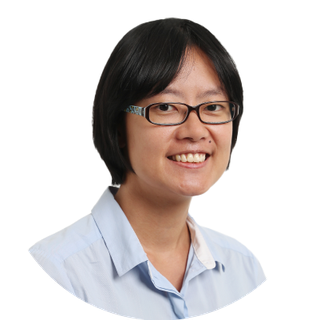Three areas singled out for bumped-up R&D funding after govt review

Singapore
FOLLOWING the mid-term review of Singapore's five-year Research, Innovation and Enterprise 2020 (RIE2020) plan, the government will allocate more funds to research and development (R&D) in three areas it has identified - digital technology, cell therapy manufacturing, and sustainable urban food production.
National Research Foundation (NRF) chairman and Finance Minister Heng Swee Keat announced this to reporters after the 11th Research, Innovation and Enterprise Council (RIEC) meeting on Wednesday.
At the press conference, Prime Minister Lee Hsien Loong, who chairs the RIEC, said of the review: "We have affirmed that we are on track, but we are sharpening our focus and making fine-tuning adjustments to the plans."
For Singapore to succeed in its research, innovation and enterprise efforts, the country must, firstly, continue to emphasise the importance of science and technology across society, he said. He warned against people who are "fearful and distrustful of science" and who hold anti-science beliefs embodied, for example, by the movement against vaccines.
Secondly, Singapore must develop a strong core of talented researchers, innovators and entrepreneurs, both local and from abroad, said Mr Lee.
Thirdly, the country must build international partnerships to pool expertise and undertake more ambitious projects.
Responding to reporters' questions, he said private-sector spending on research is "not quite what we had hoped". The aim is for private-sector R&D spending to be at 2 per cent of GDP, but the current level is 1.2 to 1.4 per cent of GDP, he noted.
He and Mr Heng, a member of the RIEC, called on the private sector to invest more, although Mr Heng did note that private spending on R&D has been growing at a compounded rate of 5.7 per cent a year.
RIE2020 was launched three years ago with S$19 billion set aside for it. The plan for 2016 to 2020 covers four broad areas: advanced manufacturing and engineering, health and biomedical sciences, services and the digital economy, and urban solutions and sustainability.
On the three areas that will have more funds allocated to them, Mr Heng said the first area - digital technology - will get S$500 million more. This will come from within the S$2.5 billion of "white space" funding set aside under the plan for unanticipated uses. About S$300 million will go towards supporting services and the digital economy. This includes additional funding for existing schemes in areas such as artificial intelligence and cyber security, and new capabilities in areas such as digital trust, the social science of digital technologies, and computational law or automating aspects of legal work.
Almost S$200 million will be used to improve supercomputing infrastructure; the National Robotics Programme will get S$41 million more.
Another area to get an extra infusion of funds, sustainable urban food production, will receive up to S$144 million for the Singapore Food Story R&D programme, in support of the push to produce 30 per cent of Singapore's food locally by 2030. The programme will focus on sustainable urban food production, including aquaculture and urban agriculture and biotech protein production.
The money will come from a mix of existing and white space funds.
Minister for National Development Lawrence Wong, also an RIEC member, said the council's discussions had homed in on food security and climate change as areas needing attention, along with Singapore's known constraints of water, energy and land.
The broader area of urban solutions and sustainability present opportunities for Singapore to serve as a living laboratory for the private sector to test-bed solutions, he added.
The third area to get additional funding for R&D, cell therapy manufacturing, will give a fillip to the biopharmaceutical manufacturing industry; S$80 million will be pumped into three R&D programmes related to the manufacturing process.
Another RIEC member, Minister for Trade and Industry Chan Chun Sing, said at the press conference that there are opportunities for Singapore to distinguish itself in niche areas such as advanced manufacturing, given that the changing nature of manufacturing has made competitiveness less dependent on size.
Apart from the three areas of increased investment, Mr Heng noted that for the first time, this year's RIEC meeting included discussions on innovation and enterprise, in which entrepreneurs and representatives from venture capital took part.
The Singapore Week of Innovation and Technology (Switch) will be held with the Singapore Fintech Festival in November to facilitate the meeting of innovators, entrepreneurs, investors and firms in deep-tech areas.
Mr Lee said that, even as Singapore pays more attention to the downstream areas of innovation and enterprise, it will not neglect basic research. The NRF announced that the government is committing to fund one or two more Research Centres of Excellence in areas of basic science.
Asked about lessons learned from the mid-term review, Mr Lee said some activities might have to be rationalised or refocused; this could entail a shift between sectors of research or a shift of emphasis within a sector of research. He cited "the right balance between biomedicine and the rest of the research activities" as an example. "We will continue to review this, and I'm sure we will be making adjustments," he said, without elaborating.
READ MORE: Editorial: Using science and technology to secure Singapore's food supply
BT is now on Telegram!
For daily updates on weekdays and specially selected content for the weekend. Subscribe to t.me/BizTimes
International
Colombian fund managers eye US$750 million fee bonanza after senators tweak pension bill
Fed survey cites inflation, US election as key financial stability risks
Oil prices steady after Iran plays down reported Israeli attack
G7 pledges swift aid for Ukraine, seeks to calm Middle East
H5N1 strain of bird flu found in milk: WHO
China moves to boost foreign investment in domestic tech companies
